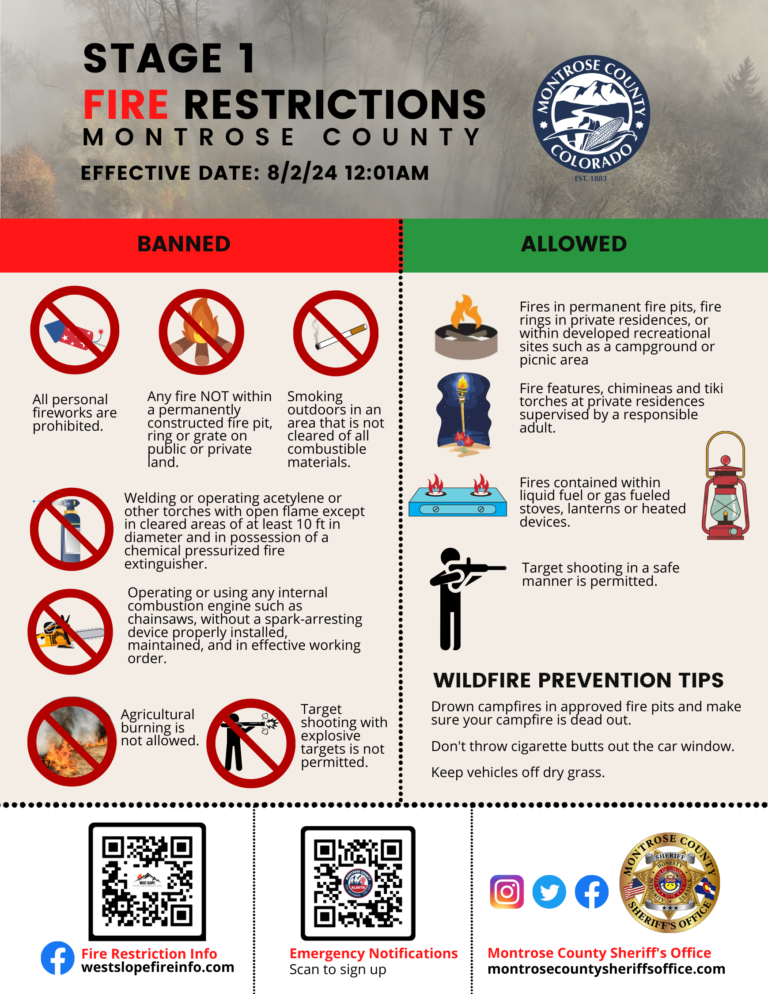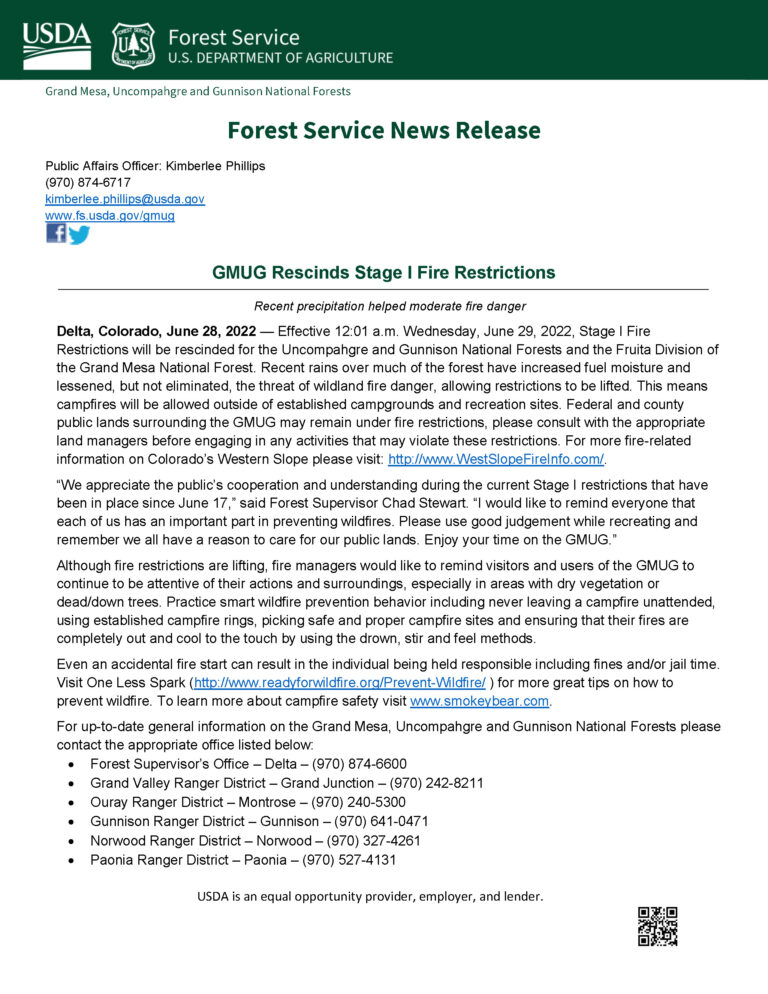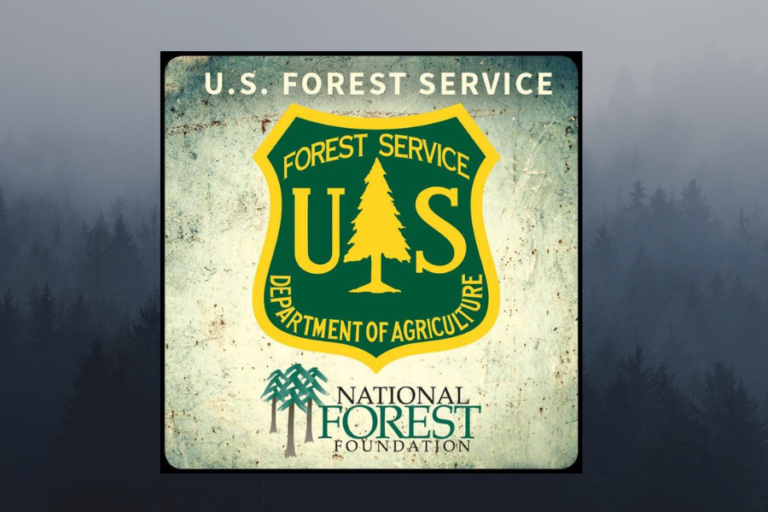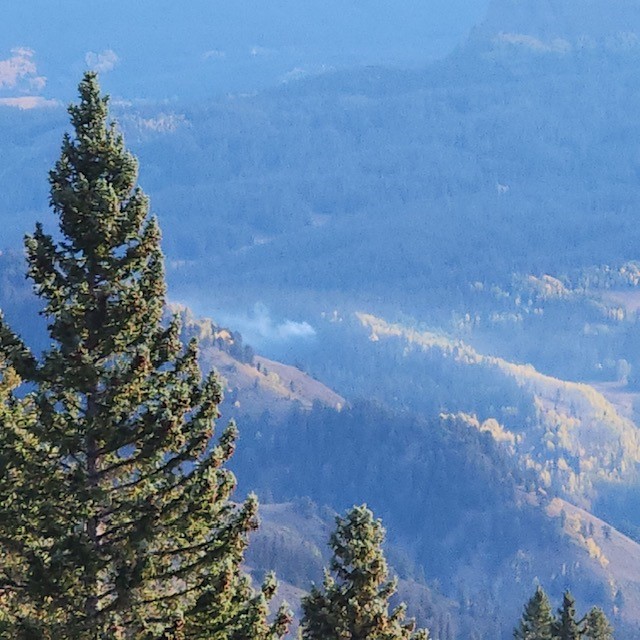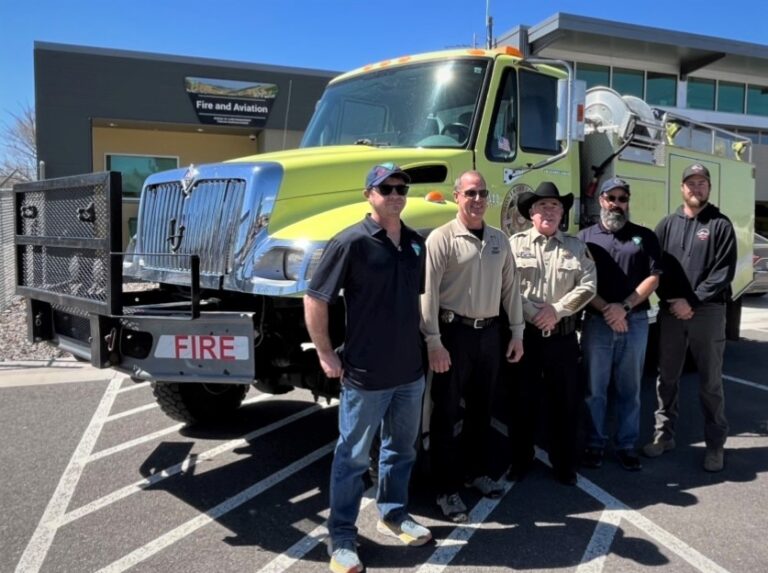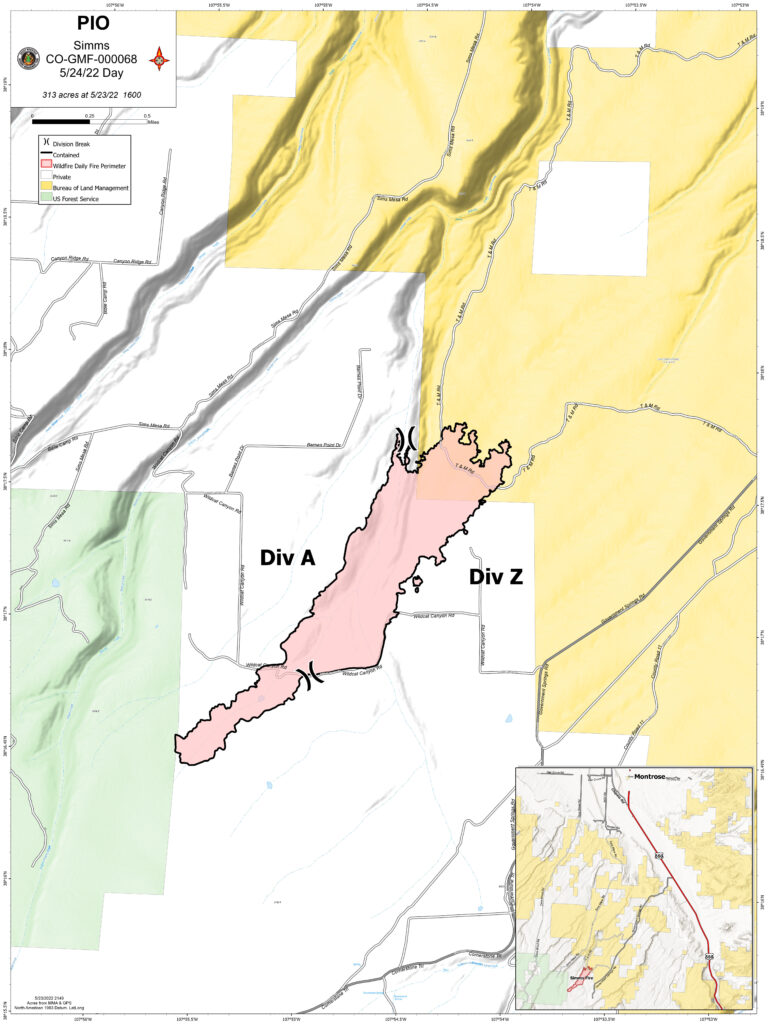LAKEWOOD, Colo., Oct. 7, 2022 – Results from the Simms Fire Facilitated Learning Analysis (FLA) have been released and several resulting recommendations were made to minimize the risk of escaped prescribed fires in the future. The FLA was initiated since the source of the Simms Fire was determined to be a spot fire from the Simms Mesa Prescribed Fire. As a learning organization, the U.S. Department of Agriculture’s Forest Service was determined to study the actions that led to this unintended outcome to avoid similar mishaps in the future. The review included:
• Facilitated Learning Analysis – This is a tool commonly used in accident investigations to improve future performance by learning from unintended outcomes; it helps decision makers and prescribed fire practitioners understand where things went wrong and what can be improved.
• Fire Environment Analysis – This is a review of the environmental conditions that influenced the fire’s behavior in a way that was not anticipated.
• Wildfire Review – This is an evaluation of the prescribed fire operation to ensure compliance with agency guidelines and burn plan elements and improve risk-informed decision-making in the future.
While the Simms Mesa Prescribed Fire was found to have been conducted within the burn plan parameters such as weather, fuel moisture content, adequate personnel, and contingency resources, recommendations were made to maximize success in future prescribed fire activities, including:
• Review fuels in and adjacent to the burn area and ensure that the fuels are modeled accurately when developing a complexity analysis.
• Ensure an on-site, properly functioning Remote Automated Weather Station to collect accurate and relevant weather and fuel moisture data.
• Include robust contingency actions and maps showing access roads, structures, and other values in burn plans, particularly when burning near homes and private land.
“Prescribed fire is a crucial management tool that reduces the risk of catastrophic wildfire while improving forest resiliency,” said Chad Stewart, forest supervisor of the Grand Mesa, Uncompahgre and Gunnison (GMUG) National Forests. “It is also difficult work with inherent risks, but we will learn from this experience and move forward to protect local communities and the lands that we manage.”
Recommendations to help fire managers resume a safe and effective prescribed fire program were released by the National Prescribed Fire Review Team in early September, following the Forest Service nationwide pause on prescribed burning. Those, along with recommendations from the FLA, will be carried forward in the GMUG’s prescribed fire program.
For more information on the National Prescribed Fire Review, visit
https://www.wildfirelessons.net/HigherLogic/System/DownloadDocumentFile.ashx?DocumentFileKey=d19e4406-ac0a-c1c2-273d-e4577e5a56e8&forceDialog=0
To review the Simms Fire Facilitated Learning Analysis, visit the Lessons Learned website at
https://www.wildfirelessons.net/orphans/viewincident?DocumentKey=fd037140-250c-49ba-b85f-be9b18e04421. For more information, contact Donna Nemeth, donna.nemeth@usda.gov, 360-951-8486.

